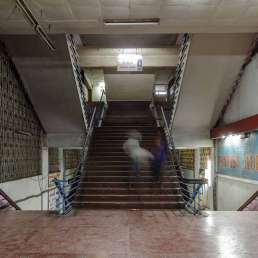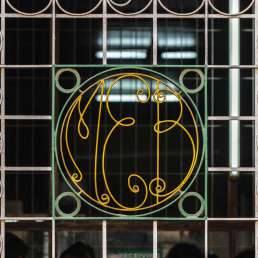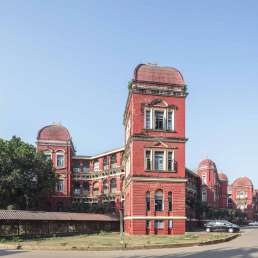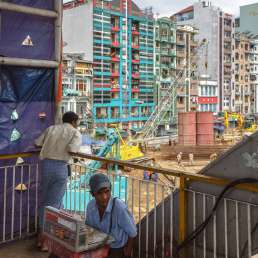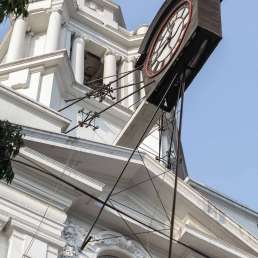Otherwise: Fu Zin Kan Hou Temple
Address: 426-432 Strand Road
Year built: 1903
Architect: Unknown
Kheng Hock Keong is Yangon’s largest Chinese (Taoist) temple, lining the southern end of Chinatown on Strand Road. It is maintained by the local Hokkien community—a fluid ethnic label designating the descendants of Chinese emigrants from Fujian, a province in southeastern China. Many emigrated from Fujian by sea to Southeast Asia in the 19th century in connection with the growth of trade during the British colonial days. Today large Hokkien communities exist in Indonesia, Malaysia, Myanmar, the Philippines and Singapore.
The temple is dedicated to the Goddess Mazu, who protects traders, seafarers and fishermen. Hokkien people often emigrated to become merchants—you will note the temple is near the port. In keeping with the temple founders’ aspirations, its name means “temple celebrating prosperity”.
Mazu’s statue dominates the main shrine inside, surrounded by lacquered and golden ornamentations. She is flanked to the right by Guan Gong, the god of loyalty and to the left by Bao Sheng Da Di, the god of medicine. A statue of Guanyin, the goddess of mercy, was added later. (Guanyin has her own temple at the northern end of Chinatown.) The temple was spared during the Japanese bombings; according to legend, Guanyin herself appeared on the shore to wave away the bombs.
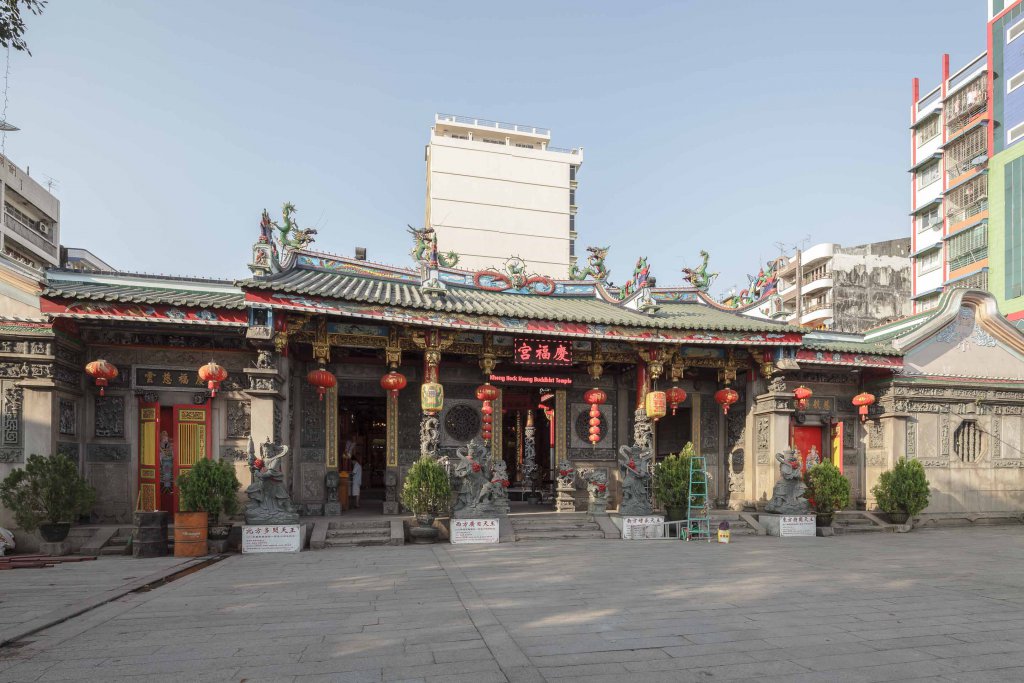
The temple also features guardian spirits along the entrance, together with numerous features of Taoist temple architecture including lanterns, dragons, golden inscriptions, sculpted pillars—and a generous coating of red paint. Burmese author Ma Thanegi quotes a British artist, Talbot Kelly, who visited the temple in 1904 and wrote admiringly about the brand new temple’s intricate “beams and joints being completely perforated almost like filigree work, then picked out in gold and vermilion”.
The courtyard contains large incense-burning ovens where worshippers come to donate “spirit money” made of gold, or silver-plated joss paper. Incense sticks, together with donations of flowers or food, appear every day outside the shrine. The best time to observe the community making these offerings is early in the morning. The temple opens at 5am and locals usually visit on their way to work. The community elders will often be playing a game of chess or simply hanging out by the front court. The local Fukienese Association has its offices here.
After 1962, relations between the Chinese community and the authorities took a turn for the worse. A nationalisation programme expropriated many Chinese business owners. Anti-Chinese riots broke out in 1967 when Chinese students defied a ban on wearing Mao badges at university. The ensuing violence would lead to tense bilateral relations between the two countries over the following decades.
The temple was founded in 1861—it was then made of wood—and was replaced by this permanent structure in 1903. It saw some renovations in 2011, on its 150th anniversary.
